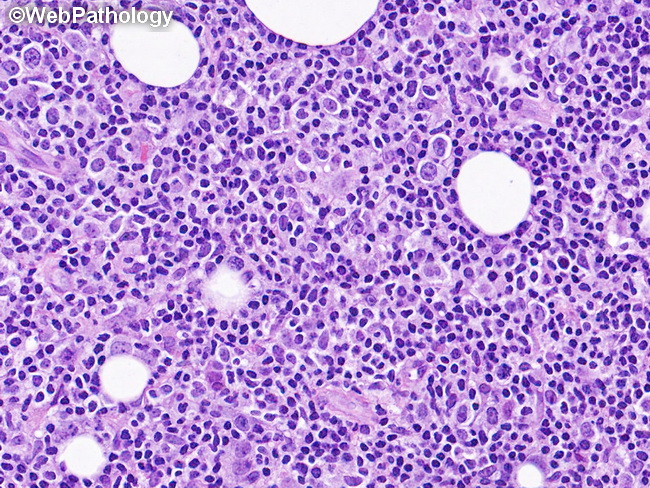Ocular Adnexal MALT Lymphomas : Molecular Genetics


Comments:
Molecular Genetics: Ocular adnexal MALT lymphomas share genetic features with MALT lymphomas arising elsewhere, including t(14;18)(q32;q21) in 25% of cases. This translocation involves IGH and MALT1 genes and is also seen in MALT lymphomas arising in liver, salivary glands, and skin. Other uncommon genetic alterations include t(1;14)(p22;q32), t(3;14)(p13;q32) and t(11;18)(q21;q21). The latter translocation involves BIRC3 (previously known as API2) and MALT1 genes and is more commonly encountered in gastric and pulmonary MALT lymphomas. Many of the genetic alteration lead to constitutive activation of NF-κB signaling pathway which is a key event in the pathogenesis of MALT lymphomas. Translocation-negative cases show mutation or deletion of chromosome 6q23.3 involving TNFAIP3 (A20) which is a negative regulator of NF-κB pathway. This image of a pulmonary MALT lymphoma shows polymorphic infiltrate consisting of small lymphocytes, centrocyte-like cells, monocytoid B cells, a few large transformed cells resembling centroblasts or immunoblasts, and a few plasma cells.



